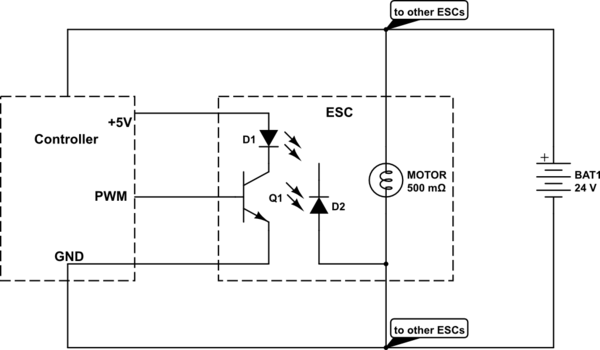I'm designing a drone controller board and a power distribution board. The power distribution board will supply the controller board, and up to 4 (Electronic Speed Controllers)ESCs, from a 4S-6S LiPo battery. The max current target of the power distribution board will be 160A. The power must be supplied to all from the LiPo, with step down voltage regulator on controller board. I will have high speed signals on the control board such as MIPI, PCIe, and Displayport. The controller board will control the ESCs via PWM from controller board to power distribution board. Is it necessary to isolate the controller board from the power distribution board to prevent ground bounce which will negatively affect the signal integrity of the controller board's high speed signals?
Will ground bounce be induced if the ESC connectors are on one board, and the controller board is completely separate? I am unsure if the current loops induced from the ESCs in the power board will affect the signal integrity of a controller board with sensitive high speed signals.
Thanks for any tips/pointers on the subject

